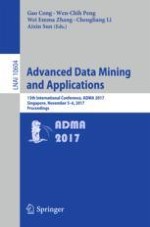2017 | OriginalPaper | Buchkapitel
Generating Life Course Trajectory Sequences with Recurrent Neural Networks and Application to Early Detection of Social Disadvantage
verfasst von : Lin Wu, Michele Haynes, Andrew Smith, Tong Chen, Xue Li
Erschienen in: Advanced Data Mining and Applications
Aktivieren Sie unsere intelligente Suche, um passende Fachinhalte oder Patente zu finden.
Wählen Sie Textabschnitte aus um mit Künstlicher Intelligenz passenden Patente zu finden. powered by
Markieren Sie Textabschnitte, um KI-gestützt weitere passende Inhalte zu finden. powered by
